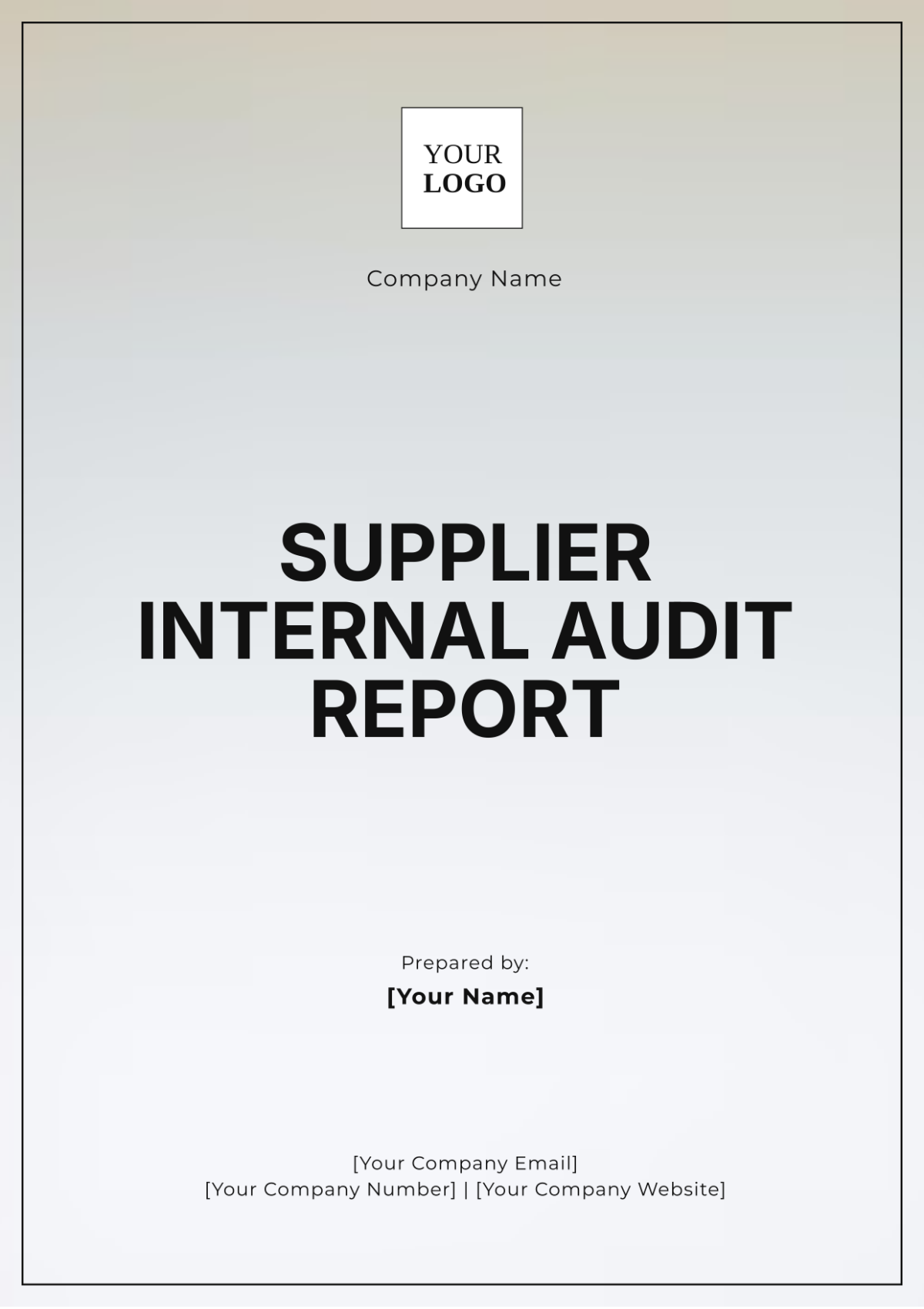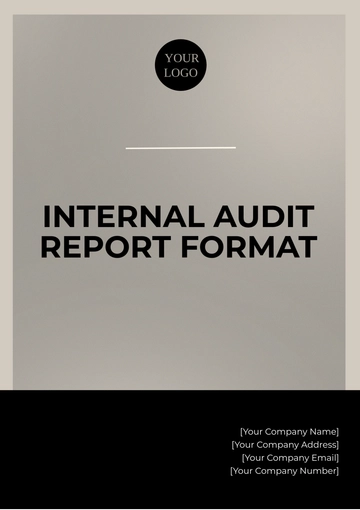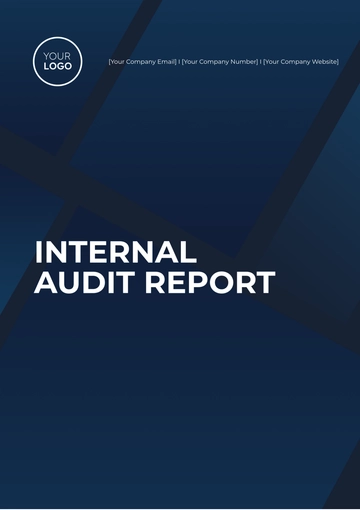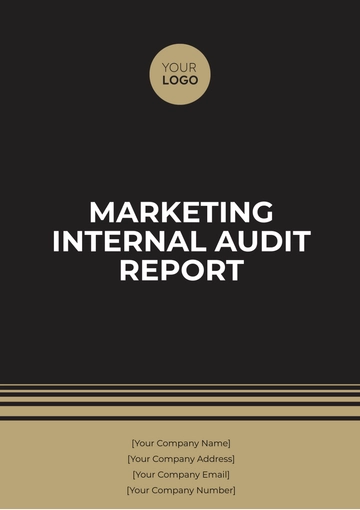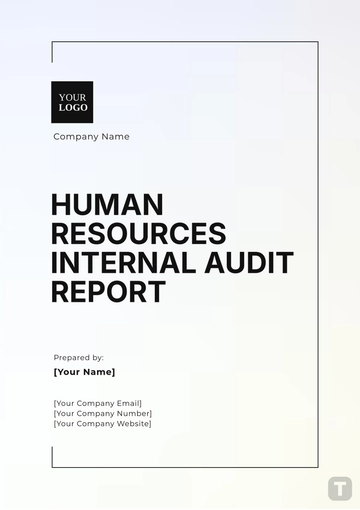Supplier Internal Audit Report
1. Introduction
This report presents the findings from the internal audit conducted on [Your Company Name] from January 1, 2050, to March 31, 2050. The primary purpose of the audit is to evaluate the compliance, performance, and effectiveness of the organization’s procurement processes, supplier management, and inventory controls. The audit aims to identify strengths and areas for improvement, ensuring that the company operates efficiently and meets industry standards.
2. Scope of the Audit
The scope of the audit encompasses the following key areas:
Procurement Process: Evaluating the efficiency and effectiveness of purchasing procedures and supplier selection criteria.
Supplier Quality Management: Assessing the quality control measures in place for supplier materials and services.
Inventory Management: Reviewing inventory practices to ensure optimal stock levels and minimize waste.
Compliance with Regulatory Requirements: Ensuring adherence to relevant laws and regulations, including industry-specific standards.
3. Audit Methodology
The audit was conducted using a combination of methodologies to provide a comprehensive assessment:
Document Review: A thorough examination of relevant documents, including procurement records, supplier contracts, quality assurance reports, compliance certificates, and inventory logs.
Interviews: Conducted in-depth discussions with key personnel involved in procurement, quality management, and inventory control, including the Procurement Manager, Quality Assurance Officer, and Warehouse Supervisor.
Observations: Performed on-site observations of processes, including procurement meetings, quality control checks, and inventory management practices.
4. Findings and Observations
4.1 Procurement Process
Key observations in the procurement process include:
Standard operating procedures (SOPs) are well-documented and followed in most cases, ensuring consistency in procurement activities.
Some instances of delays in the procurement cycle were noted, particularly in supplier approval processes, impacting project timelines by an average of 2 weeks.
Improvement is needed in supplier evaluation criteria, which currently lack comprehensive metrics for assessing performance and reliability.
4.2 Supplier Quality Management
Key observations in supplier quality management include:
Regular quality audits of suppliers are conducted, with 10 audits completed over the past year, indicating a proactive approach to quality assurance.
Quality issues were identified in 5% of the supplied materials, specifically related to defective parts from Supplier A.
Effective corrective actions have been implemented to address quality issues, including retraining suppliers and implementing additional quality checks, demonstrating a commitment to continuous improvement.
4.3 Inventory Management
Key observations in inventory management include:
Accurate and up-to-date inventory records are maintained, with discrepancies noted in 5% of inventory items during the audit.
Instances of overstocking (leading to excess carrying costs of approximately $50,000) and stockouts (resulting in production delays of 3 days) were identified, particularly in electronic components.
Recommendations for inventory optimization were proposed, including the adoption of ABC analysis to prioritize stock management.
4.4 Compliance with Regulatory Requirements
Key observations in compliance include:
All relevant regulatory requirements are adhered to, with no major violations reported during the audit period.
The documentation required for compliance is well-maintained, with regular updates to reflect changes in regulations.
Periodic training programs are conducted for staff on regulatory compliance, enhancing awareness and understanding of legal obligations.
5. Data Analysis
Area | Findings | Recommendations |
|---|
Procurement Process | Delays in the procurement cycle | Streamline the procurement process and improve supplier evaluation criteria. |
Supplier Quality Management | 5% quality issues in supplied materials | Increase the frequency of supplier quality audits and enhance quality control measures. |
Inventory Management | Instances of overstocking and stockouts | Implement an inventory optimization strategy using advanced analytics. |
Compliance | Adherence to regulatory requirements | Continue periodic training and maintain comprehensive documentation updates. |
6. Conclusions
The audit findings indicate that while [Your Company Name] has effective procedures in place, certain areas require improvement. Addressing these areas will not only enhance operational efficiency but also mitigate risks associated with supplier management and inventory control.
7. Recommendations
Review and streamline the procurement process: Focus on reducing delays and improving supplier evaluation criteria by incorporating quantitative metrics and performance reviews.
Enhance supplier quality management: Increase the frequency of audits and implement more robust quality control measures, such as integrating technology for real-time quality monitoring.
Optimize inventory management: Utilize advanced inventory management strategies to prevent overstocking and stockouts, thereby minimizing waste and enhancing cash flow.
Maintain ongoing compliance: Ensure regular training and documentation updates to stay abreast of regulatory changes, fostering a culture of compliance within the organization.
Report Templates @ Template.net
